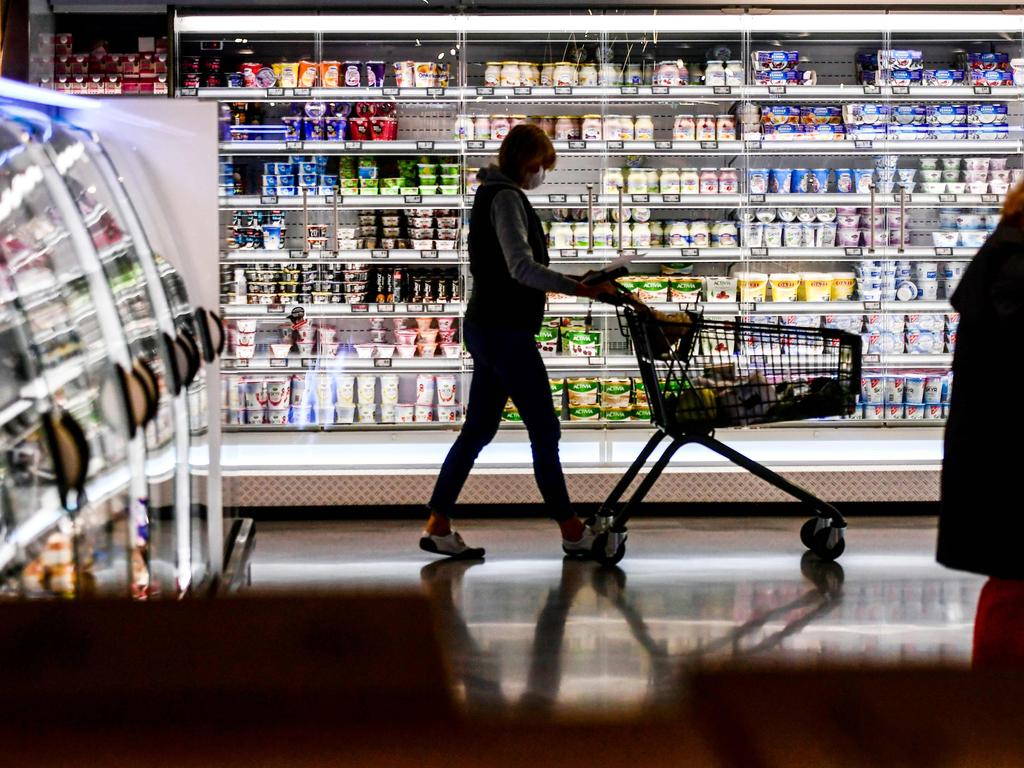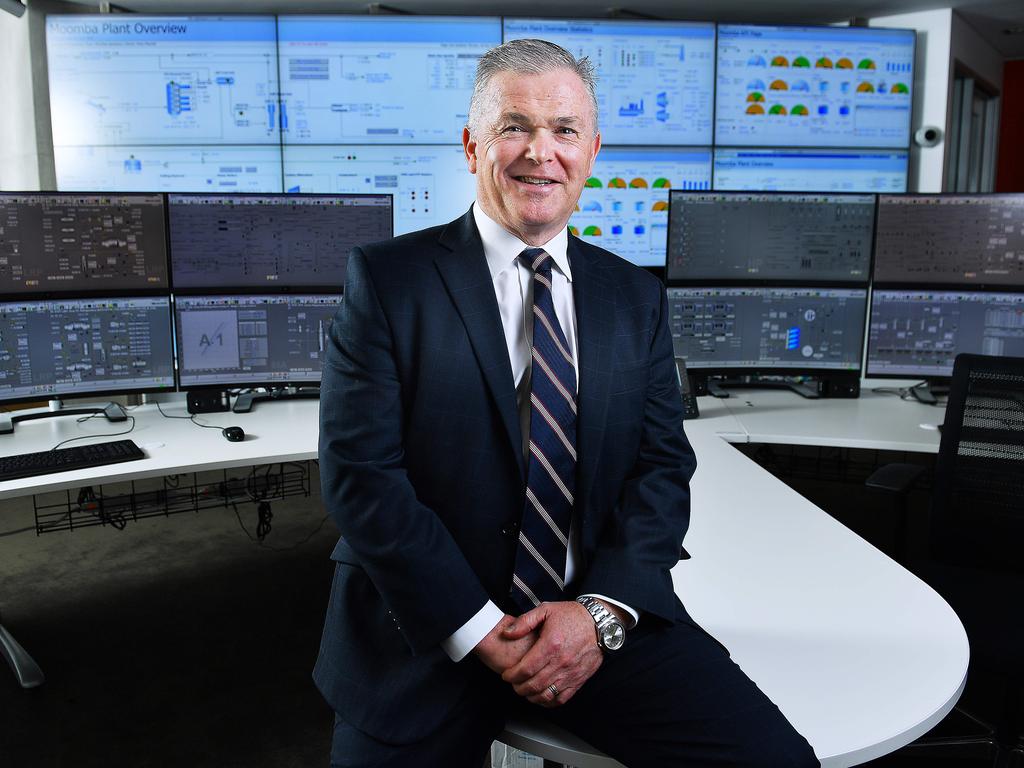How Coles, Woolies, Qantas and other companies are going net zero while keeping prices down
Australia’s biggest companies will make buying groceries, boarding a plane or heating a home more sustainable without the bigger price-tag for customers.
Exclusive: Under pressure to show “credible action” on climate change, competition among Australia’s biggest emitting industries will make buying groceries, boarding a plane or heating a home more sustainable without the bigger price-tag for customers.
Now major companies in Australia are committed to net zero emissions by 2050, scrutiny has turned to how they plan to get there, including setting meaningful interim targets.
Sustainable corporate lead at Climateworks Wei Sue said large companies taking a “leading role” setting emissions targets not only generated greater competition, but also gave smaller businesses “confidence” to follow.
Challenges remain for some sectors, such as steel production where technology to make the industry more green is not yet at maturity, but in other areas like electricity production the abundance of renewable options has significantly boosted the viability of reaching net zero.
Ms Sue said even industries with strong interim targets have had to recalibrate to remain in line with the recent Intergovernmental Panel on Climate Change (IPCC) finding that global temperatures must not exceed 1.5C above pre-industrial levels, rather than the initial 2C target.
“The devil’s in the detail here as those interim targets can look quite different depending on whether its aligned with 1.5C or 2C modelling,” she said.

Ms Sue said larger companies also had greater buying power than individual consumers and could therefore find cost-effective ways to reduce downstream emissions.
Supermarkets in particular have the scale to help consumers be more environmentally conscious.
Supermarket chain Coles has announced all its stores will be 100 per cent powered by renewable energy in less than four years’ time.
The grocery giant has been aggressively pursuing a sustainability strategy for years and has signed the final agreements to source all of its power from clean energy by the end of the 2024-25 financial year.
The latest “large-scale generation certificate” — or LGC — agreements are with Origin Energy, ACCIONA Energía, and ENGIE, meaning the company’s assets will be powered by wind and solar farms across Victoria, New South Wales, South Australia and Queensland.
Coles Chief Sustainability Officer Thinus Keevé said the move was not only good for the supermarket chain but would also fuel growth in renewable energy production in Australia.
“Our team is very proud that less than a year after we announced our target to be 100 per cent powered by renewable electricity by the end of the 2025 financial year, we already have agreements in place to meet this commitment which in turn supports the growth of renewable electricity in Australia,” Mr Keevé said.
“We’ve seen a lot of emphasis on setting targets for emission reduction, but it’s vital that business follows through on their sustainability goals.
“Our latest agreements with Origin Energy, ACCIONA Energía, and ENGIE mean we can now say with confidence that Coles will meet our targets for 100 per cent renewable electricity by June 2025.”
Woolworths supermarkets, which make up about one per cent of Australia’s entire electricity consumption, are aiming to be “net positive” by 2050, meaning they would remove more carbon from the atmosphere than they create.
Woolworths Group chief sustainability officer Alex Holt said the company was aiming to run on 100 per cent renewable energy by 2025 through investment in “all new builds”, rather than taking existing wind and solar out of the grid.
Ms Holt said the company was careful to ensure food and everyday essentials did not increase in cost, but noted weekly customer surveys consistently showed sustainability was a significant consideration for shoppers.
“Plastic reduction, sourcing locally and less food waste are among a number of different things we’re doing … to help customers make sustainable choices,” she said.

Australians are also voting with their feet when it comes to carbon-neutral travel, with Qantas now operating one of the largest carbon offsetting programs in the global aviation industry.
Qantas Group chief sustainability officer Andrew Parker said airlines had a “responsibility” to cut emissions.
“Even though we have been flying a lot less, we’ve actually seen the same proportion of customers choosing to offset their domestic travel during the pandemic – showing that this issue remains top of mind for people,” he said.
About 10 per cent of Qantas customers “tick the box” to pay a small fee to carbon offset their flight, which the company has started matching dollar-for-dollar resulting in an additional 99,599 tonnes of offsets purchased last financial year
Qantas is committed to net zero 2050, and has so far invested $50 million toward developing a sustainable aviation fuel industry in Australia.

The resources sector is also weighing up future opportunities, with Adelaide-based oil and gas producer Santos seeking to become a major player in the carbon capture and storage (CCS) industry.
The company has run a pilot program at its US$165m Moomba CCS project and intends to finalise future plans later this year.
Santos, which has committed to net zero by 2040, is also looking ahead to the potential for two other CCS hubs at its facilities in the Northern Territory and Western Australia, and managing director Kevin Gallagher said the technology would be fundamental to reducing emissions.
“There’s nothing I can think of that’s going to have a more profound impact on reducing emissions across Australia, and the double whammy of protecting jobs, than carbon capture and storage,’’ Mr Gallagher said.
“We have a lot of large, depleted reservoirs around the nation that we’ve been taking stuff out of for decades, and that can be used to safely and permanently store CO2.”

Origin Energy, owner of Australia’s biggest coal-fired electricity station, has conceded it is “probably not” able to meet an interim 2030 target linked to a 1.5C warming limit unless it accelerated the power plant’s closure.
Since 2016 the company has already cut direct emissions by more than 11 per cent, significantly aided by winding back output at its Eraring coal-fired power station south of Newcastle.
In May this year, Origin advised the Australian Energy Market Operator that it intended to close one unit at Eraring in 2030, another in 2031 and the final two units in 2032.
But Origin’s chief executive Frank Calabria acknowledged the company’s carbon cuts would have to be more ambitious to meet the 1.5C goal.
“If we are to go on that 1.5-degree pathway, and were we to come up with targets that are consistent with 2030, which we have not yet decided, then … we would need to also be clear about Eraring,” he said.

Earlier this year rival company EnergyAustralia brought forward the closure of Victoria’s Yallourn coal-fired power station from 2032 to mid-2028.
In announcing the accelerated exit from Yallourn, EnergyAustralia promised to open a 350MW battery nearby in 2026, touting it at the world’s largest.
EnergyAustralia managing director Mark Collette said the closure would “reduce (our) carbon dioxide emissions by over 60 per cent relative to today, once the plant retires.”
Not to be outdone, Origin has flagged a battery twice that size at Eraring.
AGL chief operating officer Markus Brokhof said the company – Australia’s largest electricity generator and biggest emitter – was still analysing the modelling of a 1.5C scenario.
“The recalibration of targets is an area of high complexity and at this stage, AGL remains unchanged in its plans to achieve net zero emissions by 2050,” he said.
Mr Brokhof said AGL recognised the “leading part” the company played in Australia and its “ responsibility to assist smaller businesses where we can”.
Since 2016 the company has cut direct emissions by more than 11 per cent. Intends to close one unit at Eraring coal-fired power station near Newcastle in 2030;
Brought forward the closure of Victoria’s Yallourn coal-fired power station from 2032 to mid-2028. Promising to open a 350MW battery nearby in 2026;
10 per cent of customers pay to carbon offset their flight, resulting in an additional 99,599 tonnes of offsets in 2020. So far invested $50m toward sustainable aviation fuels industry;
Aiming to run on 100 per cent renewable energy by 2025 through investment in new renewable infrastructure. Also on a path to reducing plastic, sourcing produce locally and minimising food waste;
Running a pilot program for carbon capture and storage (CCS) at its Moomba site.
Committed to net zero by 2040.
More Coverage
Originally published as How Coles, Woolies, Qantas and other companies are going net zero while keeping prices down
Read related topics:Mission Zero




